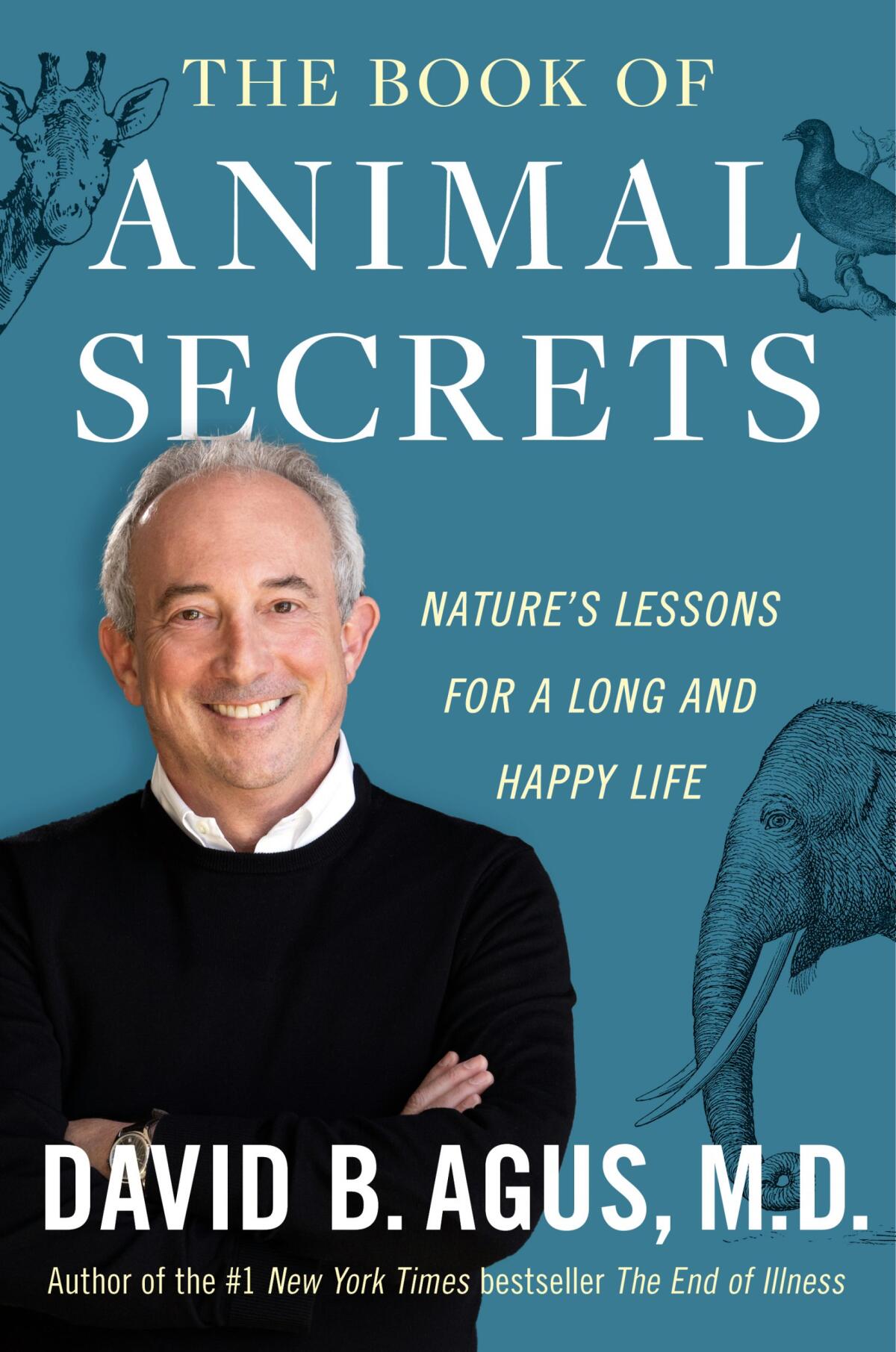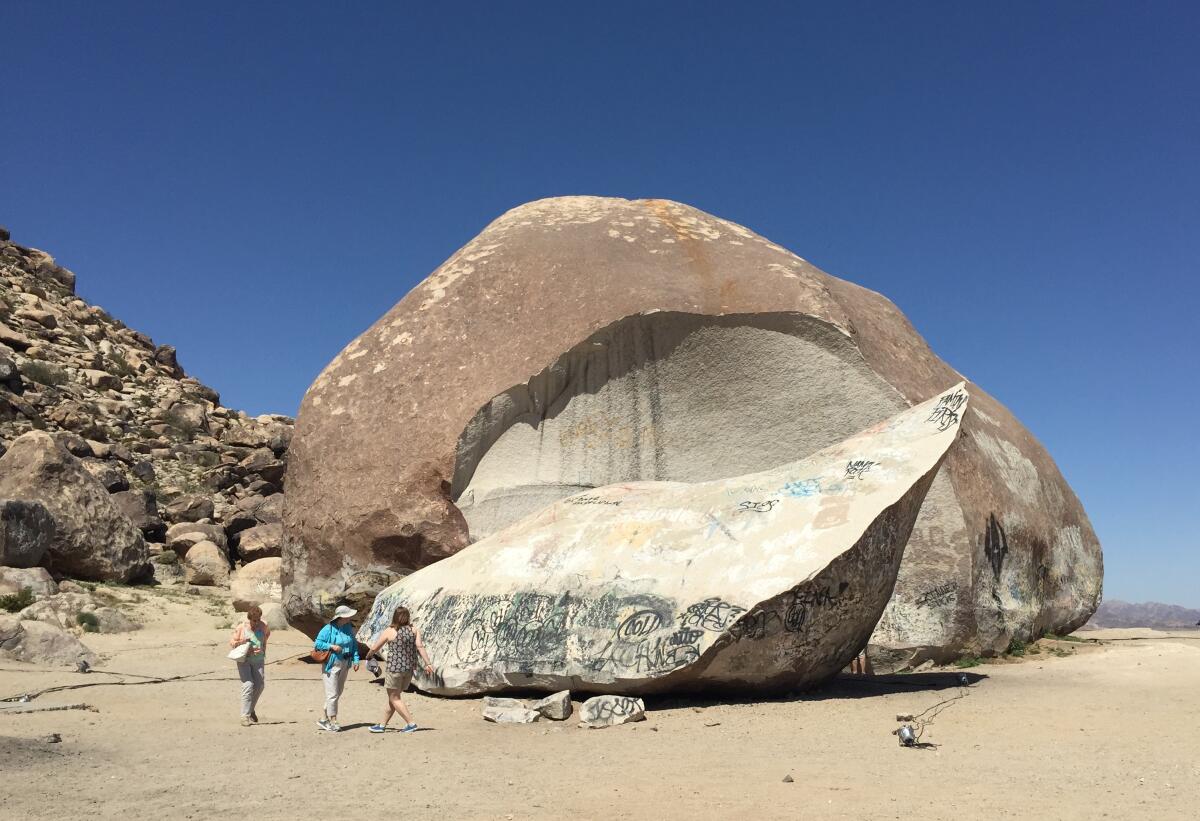How a Times reporter found a pattern of plagiarism in a USC doctor’s books that his publisher missed

Good morning, and welcome to the Essential California newsletter. It’s Monday, March 20.
Dr. David Agus is a USC oncologist who leads the Lawrence J. Ellison Institute for Transformative Medicine. He’s a frequent guest on “The Howard Stern Show,” appears as a medical contributor for CBS News and is the author of four health and wellness books.
His latest, “The Book of Animal Secrets: Nature’s Lessons for a Long and Happy Life,” was set to come out March 7 and had topped an Amazon list for top-selling books about animals ahead of its release.
But check that Amazon listing today and all you’ll find is a cute dog under a giant “SORRY.” Simon & Schuster, the publisher of Agus’ book, suspended sales last week after the Los Angeles Times found that 95 portions from the text had been plagiarized.
Corinne Purtill covers health and medicine for The Times and looked into Agus’ latest title after a source who had concerns about its content tipped her off.
Corinne’s reporting raised questions about Agus’ other books and whether a major publishing house vetted a book about human health and animal research.
As Corinne told me, it took her little more than a Google search to find a reputable plagiarism-checking software and an email to her editors.
“I got the permission, I paid $300, I uploaded the PDF, and it spit back the results,” she said.
“That entire process took under 15 minutes,” she said, adding:
There is no reason why any publisher — Simon & Schuster included — would not have been able to do exactly the same thing that the L.A. Times did.
The Times also contracted a forensic plagiarism investigator to analyze text in Agus’ book about blood circulation in giraffes. She found some giraffe facts had been copied — word for word, in some cases — from a blog post on an African safari company’s website.
In a statement to The Times, Agus said he “[takes] any claims of plagiarism seriously” and apologized “to the scientists and writers whose work or words were used or not fully attributed.”
Corinne turned her attention to Agus’ previous books, “The End of Illness,” “A Short Guide to a Long Life” and “The Lucky Years.”
On Friday, she reported her findings: Those books contain “more than 120 passages that are virtually identical to the language and structure of previously published material, including newspaper and magazine stories, scientific journal articles, popular science books, Wikipedia and blogs.”
Agus’ name appears alone on the cover of his books, but all four were produced in collaboration with Los Angeles writer Kristin Loberg (whose website now appears blank).
Loberg is credited as the co-author or collaborator on at least 45 books on the market, Corinne reports, from all of the so-called Big Five publishing houses in the U.S. Most of those titles are related to health, diet or wellness. That includes a few books by Dr. Sanjay Gupta, CNN’s chief medical correspondent.
A few of those publishers — Simon & Schuster, Penguin Random House and HarperCollins — told The Times they’d started to review their titles that Loberg worked on.
“I accept complete responsibility for any errors my work may have contained,” Loberg wrote in a statement to The Times. She said that Agus was not to blame for plagiarized portions.
“I am grateful that my collaborator has confirmed that I did not contribute to, nor was I aware of, any of the plagiarized or non-attributed passages in my books,” Agus said in a statement. “This has been a painful but valuable learning experience for me and I want to reiterate my deepest regrets for my own lack of rigor in supervising my collaborator in our process of finalizing the manuscripts.”
But some plagiarism experts Corinne spoke to say Agus is not off the hook.
“If your name is on the cover, you take full responsibility for what is on the inside,” Debora Weber-Wulff, a professor of media and computer science at HTW Berlin’s University of Applied Sciences, told her.
Chatting with Corinne, I wondered what the average reader is supposed to take away in learning about a giraffe’s blood pressure.
She argues there’s not much actionable information in Agus’ latest book. Research into giraffe heart health could be useful for cardiologists and for the development of medication, she said, but the experts who could act on such findings would get them from vetted studies — not from a pop science book that ripped information without crediting giraffe researchers.
“There’s such an absence of other sources that I think actually comes at the detriment of the text making sense,” Corinne said. “You don’t really know: ‘What am I supposed to do with this?’”
Bigger picture, Corinne said, her investigation into Agus’ “Franken-book” and other titles highlights the ethical standards in book publishing. She sums it up:
Words matter; where our information comes from matters.
“When money and marketing efforts and time and shelf space and editor space... go to these books that are not really quality or credible sources, it also means that it’s not going somewhere else — maybe [to] researchers who have actually done work in these areas,” she told me.
You can read Corinne’s initial investigation and follow-up reporting on The Times’ website.
And now, here’s what’s happening across California:
Note: Some of the sites we link to may limit the number of stories you can access without subscribing.
L.A. STORIES
The 38th annual Los Angeles Marathon drew more than 20,000 people — including elite runners, but also the likes of Elvis and Marilyn — in a 26.2-mile course through some of the city’s iconic neighborhoods. I’m feeling a little winded just reading about it. 😮💨 Los Angeles Times

Mayor Karen Bass aims to move 1,000 unhoused Angelenos indoors through her Inside Safe program by Tuesday. But homeless advocates are calling out the operation, citing abrupt shufflings of some unhoused people from one hotel to another — and sometimes a third. Los Angeles Times
“I love my job but the pay is horrible and it’s been horrible for many years,” longtime LAUSD custodial worker Bernice Young told The Times recently. She’s one of thousands of non-teaching workers preparing to go on strike this week for better pay and working conditions, in a move slated to shut down L.A. schools for three days. Los Angeles Times
Check out "The Times" podcast for essential news and more
These days, waking up to current events can be, well, daunting. If you’re seeking a more balanced news diet, “The Times” podcast is for you. Gustavo Arellano, along with a diverse set of reporters from the award-winning L.A. Times newsroom, delivers the most interesting stories from the Los Angeles Times every Monday, Wednesday and Friday. Listen and subscribe wherever you get your podcasts.
POLITICS AND GOVERNMENT
California is preparing to start making a brand of insulin. Gov. Gavin Newsom announced a $50-million contract with Civica, a nonprofit generic drugmaker. If the deal goes through as planned, a 10-milliliter vial normally priced at $300 would be sold for $30. Los Angeles Times
While the rural town of Pajaro was flooded this month when the aging levee holding back a swell of stormwater failed, another poor, majority Latino community in a similarly precarious situation survived. The key difference? A new levee and 35 years of fighting for government help. The Mercury News
In an effort to “modernize how California treats mental illness, substance use disorder and homelessness,” Gov. Newsom is pitching a new plan that state voters could decide on next year. The initiative would fund the construction of new community mental health facilities across the state and amend older legislation that counties use to pay for mental health programs and services. The Sacramento Bee
HEALTH AND THE ENVIRONMENT
This winter’s bounty of Sierra snowpack also contained a discovery: microplastics within the snowflakes that blanket the mountains. State regulators are working to understand the effect the pollutants have on our drinking water supply. San Francisco Chronicle
Maternal deaths rose sharply during the pandemic — over 40%, according to federal data. A recent report from the National Center for Health Statistics found the mortality rate for Black women was more than 2 ½ times that of white women. California has been at the forefront of the fight to reverse the trend. Los Angeles Times
Free online games
Get our free daily crossword puzzle, sudoku, word search and arcade games in our new game center at latimes.com/games.
AND FINALLY
Today’s California landmark comes from Bill Osgood of Yucca Valley: the aptly named Giant Rock near the Mojave Desert town of Landers.

Bill writes:
It is the largest freestanding boulder in North America and is purported to be the largest in the world at seven stories high. Native Americans from the Joshua Tree area consider it to be sacred. In the 1950s this was a gathering point for UFO believers and was considered to be a landing spot for alien spaceships. In the year 2000 a large chunk of the rock fell off during the night, revealing its white granite interior. No word yet on whether alien spaceships were involved.
What are California’s essential landmarks? Fill out this form to send us your photos of a special spot in California — natural or human-made. Tell us why it’s interesting and what makes it a symbol of life in the Golden State. Please be sure to include only photos taken directly by you. Your submission could be featured in a future edition of the newsletter.
Please let us know what we can do to make this newsletter more useful to you. Send comments to [email protected].
Sign up for Essential California
The most important California stories and recommendations in your inbox every morning.
You may occasionally receive promotional content from the Los Angeles Times.




